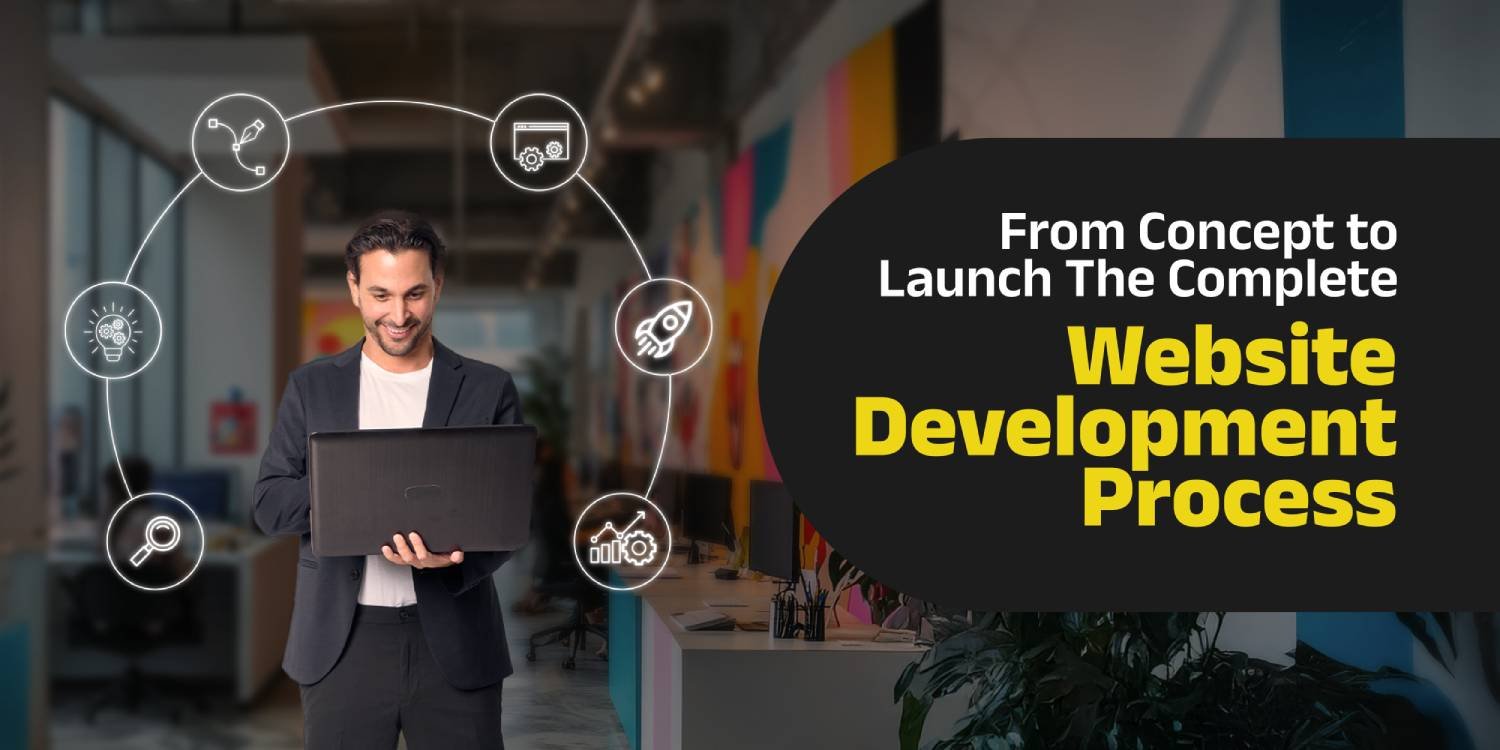- Blogs
From Concept to Launch: The Complete Website Development Process

Creating a website is more than just a technical endeavour; it’s an art form that combines design, functionality, and user experience. At Origami Creative, we believe that a well-planned website development process is essential for success. This article outlines the complete website development process, from concept to launch, ensuring that your online presence stands out in a crowded digital landscape.
- Define Your Goals and Objectives
Before diving into design and coding, it’s crucial to establish clear goals for your website. Ask yourself:
- What is the primary purpose of the website? (e.g., lead generation, e-commerce, portfolio)
- Who is your target audience?
- What key features do you want to include?
By defining your goals, you can create a website that not only looks good but also serves a specific function.
- Research and Planning
Once your goals are set, it’s time to conduct thorough research. This includes:
- Competitor Analysis: Look at similar websites in your industry. What works for them? What doesn’t?
- User Personas: Develop profiles for your ideal users. Understanding their needs will guide your design and content strategy.
- Sitemap Creation: A sitemap outlines the structure of your website, detailing the main pages and subpages. This serves as a blueprint for your project.
- Design Phase
The design phase involves creating the visual elements of your website. This includes:
- Wireframes: These are basic layouts that show the arrangement of elements on each page. They help visualize user flow and interaction.
- Mockups: Once wireframes are approved, create detailed mockups that showcase colors, typography, and imagery. Tools like Adobe XD or Figma can be handy in this phase.
- Responsive Design: Ensure your design is mobile-friendly. With an increasing number of users accessing websites on mobile devices, responsive design is essential.
- Content Creation
Content is king when it comes to website development. It’s essential to create engaging, informative content that resonates with your target audience. This phase includes:
- SEO Strategy: Implement on-page SEO techniques to improve your website’s visibility in search engines. Focus on keyword research, meta descriptions, and alt tags for images.
- Copywriting: Write clear, concise copy that communicates your message effectively. Use headings, bullet points, and short paragraphs to enhance readability.
- Visual Content: Incorporate images, videos, and infographics to enrich the user experience. Make sure all visual elements align with your brand identity.
- Development Phase
With designs and content in place, it’s time for development. This phase involves:
- Front-End Development: This refers to the coding of the visual elements users interact with, usually using HTML, CSS, and JavaScript.
- Back-End Development: This involves server-side programming and database management. Choose a suitable content management system (CMS) like WordPress, Joomla, or Drupal for easier management.
- Integration: Ensure all components, including APIs and third-party tools, work seamlessly together.
- Testing and Quality Assurance
Before launching your website, it’s vital to conduct thorough testing to ensure everything functions as intended. This includes:
- Functionality Testing: Check all links, forms, and scripts to confirm they work correctly.
- Usability Testing: Gather feedback from real users to identify any navigation issues or design flaws.
- Cross-Browser Compatibility: Test your website on various browsers and devices to ensure consistent performance.
- Launch
Once testing is complete and you’re satisfied with the results, it’s time to launch your website. Here are a few key steps to consider:
- Domain Registration: Make sure your domain name is registered and ready to go.
- Hosting Setup: Choose a reliable hosting provider to ensure your website runs smoothly.
- Go Live: Announce your launch on social media, email newsletters, and other marketing channels to generate buzz.
- Post-Launch Maintenance
The launch is just the beginning. Continuous maintenance is essential for the long-term success of your website. This involves:
- Regular Updates: Keep your content fresh and relevant by regularly updating blog posts and pages.
- Performance Monitoring: Use tools like Google Analytics to track visitor behavior and site performance.
- SEO Maintenance: Regularly revisit your SEO strategy to adapt to changing algorithms and market trends.
Conclusion
The complete website development process requires careful planning, creativity, and technical expertise. By following these steps, you can create a website that not only meets your business objectives but also provides a great user experience. At Origami Creative, we specialize in turning concepts into fully functional websites, ensuring your brand shines online. Whether you’re starting from scratch or looking to revamp your existing site, we’re here to guide you through every step of the journey.
For more information about our website development services, visit https://origamicreative.com/website-and-app-development/ today!